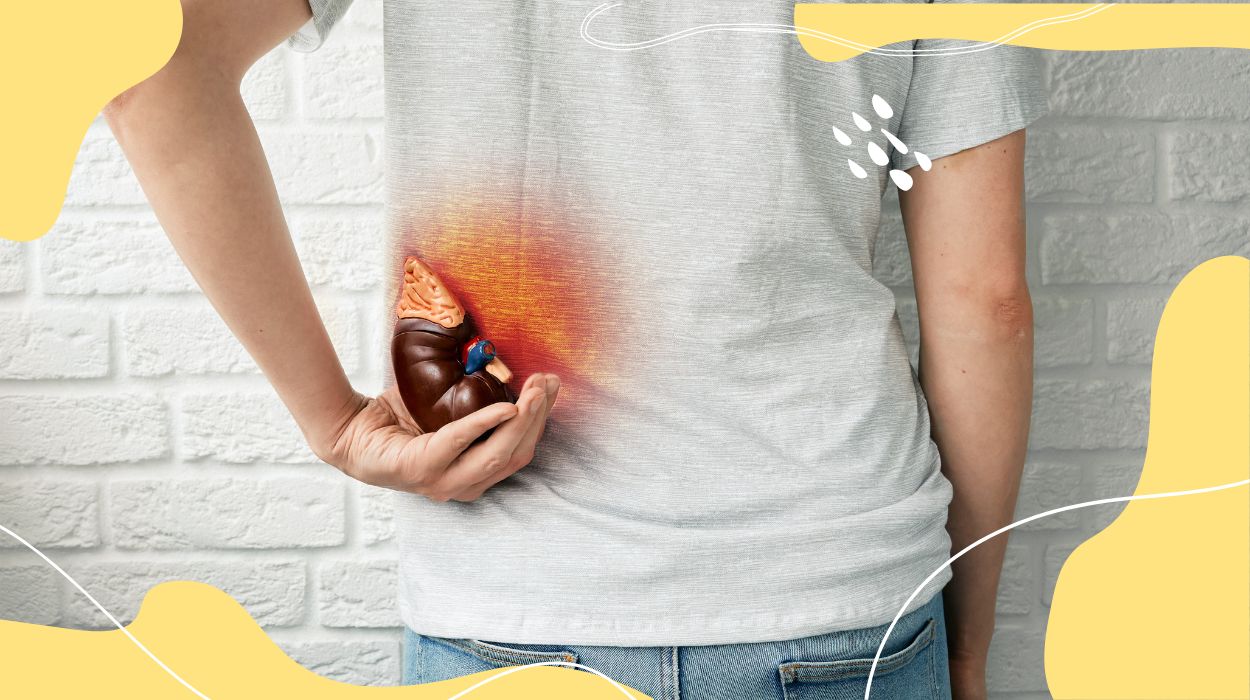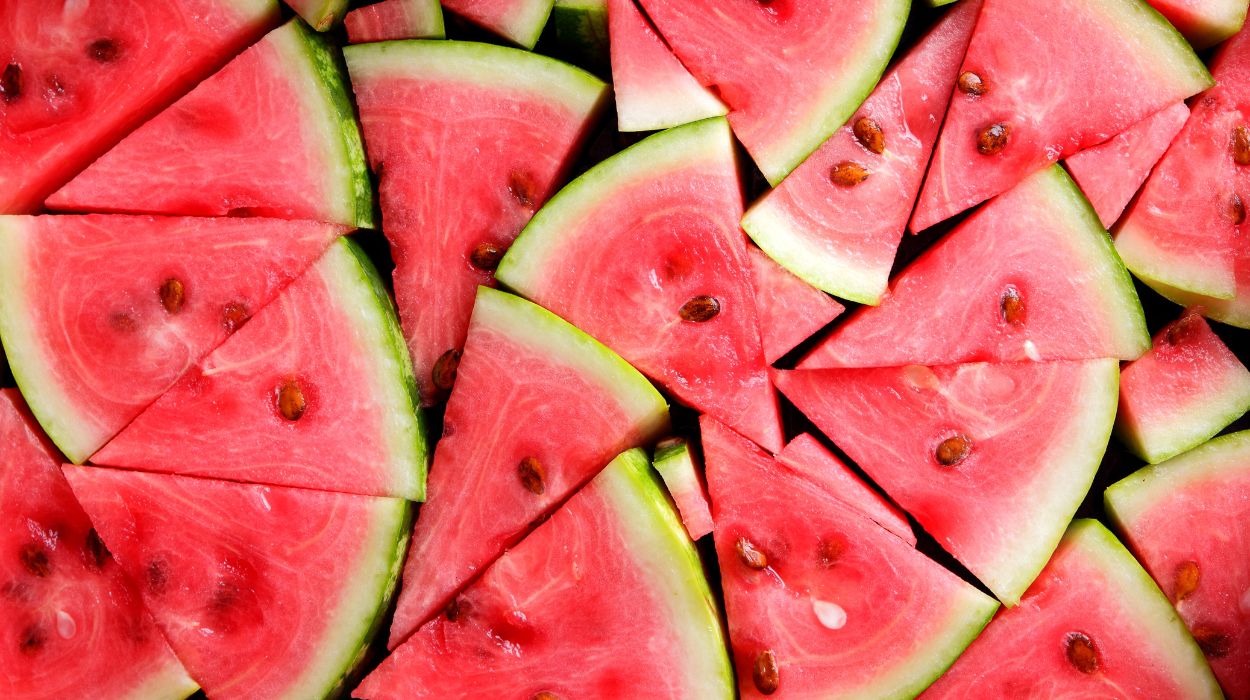 Expert's opinion
Expert's opinion
Expert's opinion
The article is a subjective view on this topic written by writers specializing in medical writing.
It may reflect on a personal journey surrounding struggles with an illness or medical condition, involve product comparisons, diet considerations, or other health-related opinions.
Although the view is entirely that of the writer, it is based on academic experiences and scientific research they have conducted; it is fact-checked by a team of degreed medical experts, and validated by sources attached to the article.
The numbers in parenthesis (1,2,3) will take you to clickable links to related scientific papers.
How To Get Rid Of Kidney Stones: 7 Home Remedies For Kidney Stones 2024

The development of kidney stones is a common ailment that affects about 1 out of every 11[1] people in the United States. About 12% of Americans will develop kidney stones during their life. In some instances, a trip to the emergency room may be necessary.
Thankfully, there are things you can do to prevent the development of kidney stones. It is also possible to get rid of kidney stones using prescribed treatments or at-home remedies.
Adults are more at risk of developing kidney stones due to diet, lifestyle choices, genetics, and certain medical conditions. Between the ages of 40 and 60[2] is when kidney stones are most likely to develop.
How To Get Rid Of Kidney Stones
- Drink more water and other fluids to flush the renal system and hydrate the body.
- Take pain relievers and medication to relax the ureter muscles.
- Undergo shock wave[3] treatment to break up kidney stones.
- Undergo surgery[4] to remove huge kidney stones that won’t easily pass quickly or are blocking critical systems.
- Take medicine for overactive parathyroid glands[5], or undergo surgery if needed.
- Consume more citric acid.
- Eat more diuretic foods.
7 Remedies To Pass Kidney Stones Fast At Home
If you were wondering how to get rid of kidney stones naturally, there are natural products you can eat or drink as a kidney stone treatment. We will examine some home remedies to help prevent kidney stones formation, break up stones, and pass them more gently from your body.
Increase Water Intake
It is critical not to be dehydrated and to drink plenty of water and fluids[6] like apple cider vinegar[7] and citric fruit juices to break up kidney stones. Keep kidney stone formation at bay by regularly drinking up to 3 liters daily.
Lemon Juice And Olive Oil Cocktail
It may seem more appropriate for making a salad dressing or marinating poultry, but a lemon juice and olive oil cocktail can help with kidney stones. Blend ¼ cup olive oil[8] to flush stones and 1/4 cup lemon juice[9] to break up kidney stones and drink. Follow it with a cup of water to flush the kidneys.
Consume Diuretic Foods

Get ample hydration by eating foods with high water content like celery, cucumbers, watermelon, and asparagus. Consuming diuretics[10] helps reduce calcium levels in the urine and helps flush the body to prevent kidney stones.
Drink Wheatgrass
Head to the juice bar and consume a good share of wheatgrass to help with kidney stones. Wheatgrass[11] contains plenty of nutrients and antioxidants to help clear the urinary tract and renal system. Additionally, wheatgrass improves and increases urine flow to make stones pass easier.
Fill Up On Pomegranate Juice
Drinking pomegranate juice[12] is a natural kidney stone treatment that also improves kidney function. The antioxidants within pomegranate juice and its ability to lower the acidity of urine help flush kidney stones.
Drink Basil Tea Or Juice
Take some fresh basil[13] and make it into tea or juice to get rid of kidney stones naturally. Basil helps treat inflammation and digestive disorders and contains acetic acid and antioxidants. Consuming basil reduces pain, breaks down kidney stones, and may support a healthy renal system.
Consume Kidney Bean Broth
Making a broth from kidney beans can help to pass kidney stones. To make the broth:
- Boil the pods inside the beans for at least 6 hours.
- Strain the liquid and allow it to cool before drinking.
- Consume the broth for up to two days, as much as every two hours.
In addition to using one of the above home remedies to get rid of kidney stones, you may want to take an over-the-counter medication for pain relief. If the home remedies are unsuccessful in helping you pass large kidney stones or too much time has passed without passing the stones, seek medical attention. Do consult your medical provider for any concerns or questions before treating kidney stones on your own.
What Is A Kidney Stone?
A kidney stone is a hard deposit of acid salts and minerals that form stones in the kidneys. Kidney stones are typically accompanied by severe pain and may cause fever, difficulty urinating, and nausea. Often kidney stones form from eating an excess of high amounts of salt or sugar, not drinking enough water, and other factors.
Certain foods containing a high amount of oxalates may contribute to kidney stone formation. Uric acid stones, calcium stones, and struvite stones are common types of stones. Kidney stones may also be referred to as renal calculi, urolithiasis, or nephrolithiasis.
How Common Are Kidney Stones?
Kidney stones are a common ailment in adults and rare in children. Nine percent of women and 19 percent of men in the United States may suffer from kidney stones at some point in their life. When stones pass from the bladder, they often dissolve into tiny particles that are not visible. However, if you see a visible stone, bring it to your healthcare provider for review.
Kidney stones may develop in one or both kidneys. The following are specific types of kidney stones you may encounter.
- Calcium stones
- Uric acid stones
- Struvite stones
- Cystine stones
Struvite stones are not common and are often connected to frequent urinary tract infections. Calcium stones are the most common and are 80% of stones. Calcium stones are either calcium oxalate or calcium phosphate, which makes some people avoid consuming calcium. However, consuming certain types of calcium may help reduce the chance of developing stones.
When uric acid crystals don’t dissolve in urine, they may transform into uric acid stones. Acidic urine caused by gout, type 2 diabetes, or being overweight may contribute to developing uric acid kidney stones.
Cystine stones are the rarest type, consisting of less than 1 percent of kidney stones. When the kidneys cannot reabsorb cystine from the urine due to metabolic disorders, it can create stones.
Symptoms
You may conclude that you have kidney stones if you suffer from persistent foul-smelling, cloudy urine, lower back and side pain, and other common symptoms. However, undergoing tests or seeking a diagnosis from a healthcare provider can adequately confirm kidney stones.
A CT scan or ultrasound helps check for kidney stones. Urine testing is another way to determine if minerals that form kidney stones are present. X-rays can help reveal kidney stones within the urinary tract. A patient may need multiple scans or tests to ensure no small stones are missed.
If you are unsure if you have kidney stones, get familiar with specific symptoms attributed to this common ailment. Other serious health problems could also trigger the following symptoms. However, visit your medical professional for diagnosis and testing to determine if kidney stones are present.
- Persistent severe, sharp pain around the abdomen, at the side of the body, or the back
- Pain or burning when urinating
- You need to urinate more often
- Foul-smelling urine that is cloudy, pink, red, or brown
- Profuse sweating with or without a high fever over 101.5 degrees Fahrenheit
- Frequent bouts of nausea or vomiting
- Chills and fever
If you are not actively taking any type of kidney stone treatment and allowing symptoms to pass on their own, or are not getting results fast enough, seek medical attention. A high fever, inability to eliminate urine without pain or blood present, and other symptoms related to kidney stones should be treated immediately. Severe cases of kidney stones can lead to a damaged renal system if left untreated for too long and create other problems.
How To Pass A Kidney Stone?
Depending on the size of a kidney stone, it may take days, weeks, or months to pass. Stones that are bigger than 4 mm can take up to three weeks to leave the body. Once kidney stones reach the bladder, they often pass after a few days. However, sizable kidney stones can get stuck within the kidney tubes, block or narrow the ureter, or be too difficult to dissolve and pass from the bladder.
If you are curious about how to pass a kidney stone, there are multiple solutions. You can undergo shock wave treatment to break up kidney stones and get them to exit the body. Other kidney stone treatments include drinking plenty of water, increasing citric acid intake, or eating diuretic foods. Kidney stones that are too large to pass or are creating a blockage require surgery.
If you want to know how to pass a kidney stone in 24 hours, most kidney stones pass without much interference after a few hours or days. However, drinking 2 to 3 quarts of water or more helps to pass a small stone quickly. Also, take an alpha-blocker[14] to relax the ureter muscles to help pass stones fast and take pain medication to reduce discomfort and pain.
How Long Does It Take To Pass A Kidney Stone?
Kidney stones less than 4 mm in size can pass on their own in about a month. Stones that are 4 to 6 mm[15] in size take 45 days or so to pass. Kidney stones larger than 6 mm take up to a year to dissolve and depart from the body fully.
You can combine alpha-blockers, increase water intake, and consume specific foods to pass a small kidney stone within 24 hours. However, it is typical for average-sized kidney stones to take 2 to 3 days, and up to 2 to 3 weeks to pass.
The location and size of the kidney stones impact the length of time needed for them to go away. Be mindful that pain and discomfort, while kidney stones pass, may remain for a few days after they are gone.
When To See Doctor?
If kidney stones are causing you extreme pain that even over-the-counter medication cannot quell, it may be time to visit the doctor. Make an appointment with your medical provider when urination is incredibly painful or causes burning sensations, urine is brown, pinkish, red, or foul-smelling. Fever, chills, nausea, severe pain, inability to urinate, vomiting, and prolonged adverse symptoms related to kidney stones require an emergency room visit.
Sometimes stones are too large to pass using natural treatments for kidney stones and can only be reviewed via medical diagnosis and testing. When kidney stones cannot pass and are causing pain, a fever over 101.5 Fahrenheit, difficulty urinating, and other problems, surgery may be the only solution to treat kidney stones.
Kidney Stone Prevention
When it comes to kidney stones, prevention is the best medicine. Kidney stones may be a painful and common affliction for many adults in their lifetime, but there are things you can do to reduce the chance of stones developing in the first place.
Consider the following preventative measures for reducing the likelihood of kidney stone formation.
- Avoid Foods High In Oxalates
- Increase Calcium Intake
- Drink More Water
- Reduce Sodium Consumption
- Limit Animal Protein
- Avoid Taking Vitamin C Supplements
Avoid Oxalate-Rich Foods
Many kidney stones develop from a combination of oxalate[16] and calcium, creating calcium oxalate stones. Eating too many foods rich in oxalates like spinach, shredded wheat cereals, grits, rhubarb, tea, and others can contribute to stones.
Consume More Calcium
Dietary calcium[17] helps absorb oxalates that contribute to calcium oxalate kidney stones. Make sure to consume calcium supplements with food to reduce the risk of stone formation. Low-calcium diets may increase the risk of developing stones and other health issues.
Hydrate With Water
Many people don’t drink enough water, so consume more water[18] to combat kidney stones throughout your day. Also, feel free to add some apple cider vinegar or lemon juice to your water for a boost that breaks up stones.
Eat Less Sodium-Rich Foods
Consuming foods with a high amount of sodium[19] like processed foods and fast foods can increase the amount of calcium leaked in urine. A diet high in sodium can increase the risk of kidney stone formation.
Reduce Animal Protein Consumption
If you frequently develop calcium phosphate kidney stones, try to cut down on eating organ meats, seafood, and eggs. A diet high in protein[20] reduces urinary citrate. Low urinary citrate[21] levels increase the risk of developing kidney stones.
Avoid Vitamin C Supplements
Men who regularly take a high dose of vitamin C[22] supplements may increase the risk of developing kidney stones. It is vital to consume healthy levels of vitamin C but get it through foods instead of supplements. Be careful with vitamin C intake because the body can convert it into oxalate.
Risks
It is critical to treat kidney stones and not let persistent pain or difficulty urinating continue for long. If kidney stones are left untreated, they can strain the kidneys, block or narrow the ureters, increase the risk of infection, and even cause the kidneys to malfunction and shut down. If you suspect kidney stones are causing problems for you and related symptoms are present, do not hesitate to contact your physician or visit the emergency room.
The risk of developing kidney stones may increase if you have hyperparathyroidism, frequent urinary tract infections, renal tubular acidosis, and cystinuria. Obesity, family history, dehydration, and certain digestive and kidney diseases can also lead to kidney stones. Take preventative measures, don’t let kidney stones go untreated, and protect your health and renal system.
+ 22 sources
Health Canal avoids using tertiary references. We have strict sourcing guidelines and rely on peer-reviewed studies, academic researches from medical associations and institutions. To ensure the accuracy of articles in Health Canal, you can read more about the editorial process here
- Fontenelle LF;Sarti TD (2019). Kidney Stones: Treatment and Prevention. American family physician, [online] 99(8). Available at: https://pubmed.ncbi.nlm.nih.gov/30990297/ [Accessed 18 Jul. 2023].
- Stamatelou, K.K., Francis, M.E., Jones, C.A., Nyberg, L.M. and Curhan, G.C. (2003). Time trends in reported prevalence of kidney stones in the United States: 1976–199411.See Editorial by Goldfarb, p. 1951. [online] 63(5), pp.1817–1823. doi:https://doi.org/10.1046/j.1523-1755.2003.00917.x.
- Cleveland, R.O. and Sapozhnikov, O.A. (2005). Modeling elastic wave propagation in kidney stones with application to shock wave lithotripsy. [online] 118(4), pp.2667–2676. doi:https://doi.org/10.1121/1.2032187.
- Breda, A. and Oriol Angerri (2014). Retrograde intrarenal surgery for kidney stones larger than 2.5 cm. [online] 24(2), pp.179–183. doi:https://doi.org/10.1097/mou.0000000000000030.
- Rodman, J.H. and Mahler, R.J. (2000). KIDNEY STONES AS A MANIFESTATION OF HYPERCALCEMIC DISORDERS. [online] 27(2), pp.275–285. doi:https://doi.org/10.1016/s0094-0143(05)70257-3.
- Curhan, G.C., Willett, W.C., Rimm, E.B., Spiegelman, D. and Stampfer, M.J. (1996). Prospective Study of Beverage Use and the Risk of Kidney Stones. [online] 143(3), pp.240–247. doi:https://doi.org/10.1093/oxfordjournals.aje.a008734.
- Singh, K., Ramya and Devyani (2019). In Vitro Studies on Synergistic Effects of Limonia Acidissima And Apple Cider Vinegar on AntiUrolithiatic… [online] ResearchGate. Available at: https://www.researchgate.net/publication/332848777_In_Vitro_Studies_on_Synergistic_Effects_of_Limonia_Acidissima_And_Apple_Cider_Vinegar_on_AntiUrolithiatic_Activity [Accessed 4 Jul. 2023].
- Ansari, A., Singh, S.P., Khinchi, M.P., Shama, P. and Megha Mahaver (2017). A Brief Review On: Kidney Stone. Asian Journal of Pharmaceutical Research and Development, [online] pp.1–9. Available at: https://www.ajprd.com/index.php/journal/article/view/333 [Accessed 18 Jul. 2023].
- Aras, B., Nadir Kalfazade, Volkan Tugcu, Eray Kemahli, Ozbay, B., Polat, H. and Ali Ihsan Tasci (2008). Can lemon juice be an alternative to potassium citrate in the treatment of urinary calcium stones in patients with hypocitraturia? A prospective randomized study. [online] 36(6), pp.313–317. doi:https://doi.org/10.1007/s00240-008-0152-6.
- Cáceres, A., Girón, L.M. and Martínez, A. (1987). Diuretic activity of plants used for the treatment of urinary ailments in guatemala. [online] 19(3), pp.233–245. doi:https://doi.org/10.1016/0378-8741(87)90001-8.
- Rana, S.V., Jaspreet Kaur Kamboj and Gandhi, V. (2011). Living life the natural way-Wheatgrass and Health. [online] ResearchGate. Available at: https://www.researchgate.net/publication/288879068_Living_life_the_natural_way-Wheatgrass_and_Health [Accessed 18 Jul. 2023].
- Mina Cheraghi Nirumand, Marziyeh Hajialyani, Rahimi, R., Mohammad Hosein Farzaei, Stéphane Zingue, Seyed Mohammad Nabavi and Anupam Bishayee (2018). Dietary Plants for the Prevention and Management of Kidney Stones: Preclinical and Clinical Evidence and Molecular Mechanisms. [online] 19(3), pp.765–765. doi:https://doi.org/10.3390/ijms19030765.
- David, J. (n.d.). The Pharma Innovation Journal 2015; 4(8): 81-84 Preparation of herbal Shrikhand prepared with basil (Ocimum basilicum) extract. [online] Available at: https://www.thepharmajournal.com/vol4Issue8/Issue_Oct_2015/4-7-38.1.pdf.
- Koski, R.R. and Zufall, W.H. (2017). Efficacy and Safety of Alpha-Blockers for Kidney Stones in Adults. [online] 34(2), pp.54–61. doi:https://doi.org/10.1177/8755122517750398.
- Parmar, M.S. (2004). Kidney stones. [online] 328(7453), pp.1420–1424. doi:https://doi.org/10.1136/bmj.328.7453.1420.
- Massey, L.K. (2003). Dietary influences on urinary oxalate and risk of kidney stones. [online] 8(6), pp.s584-594. doi:https://doi.org/10.2741/1082.
- Massey, L.K., Roman-Smith, H. and Roger A.L. Sutton (1993). Effect of dietary oxalate and calcium on urinary oxalate and risk of formation of calcium oxalate kidney stones. [online] 93(8), pp.901–906. doi:https://doi.org/10.1016/0002-8223(93)91530-4.
- Apa.org. (2023). APA PsycNet. [online] Available at: https://psycnet.apa.org/record/2020-88222-004 [Accessed 18 Jul. 2023].
- Moe, O.W. (2006). Kidney stones: pathophysiology and medical management. [online] 367(9507), pp.333–344. doi:https://doi.org/10.1016/s0140-6736(06)68071-9.
- Tracy, C.R., Best, S.L., Coleman, J.A., Poindexter, J.R., Adams-Huet, B., Khashayar Sakhaee, Maalouf, N.M., Charles Y.C. Pak and Pearle, M.S. (2014). Animal Protein and the Risk of Kidney Stones: A Comparative Metabolic Study of Animal Protein Sources. [online] 192(1), pp.137–141. doi:https://doi.org/10.1016/j.juro.2014.01.093.
- Zuckerman, J.M. and Assimos, D.G. (2009). Hypocitraturia: pathophysiology and medical management. Reviews in urology, [online] 11(3), pp.134–44. Available at: https://www.ncbi.nlm.nih.gov/pmc/articles/PMC2777061/ [Accessed 18 Jul. 2023].
- Ferraro, P., Curhan, G.C., Gambaro, G. and Taylor, E. (2016). Total, Dietary, and Supplemental Vitamin C Intake and Risk of Incident Kidney Stones. [online] 67(3), pp.400–407. doi:https://doi.org/10.1053/j.ajkd.2015.09.005.



